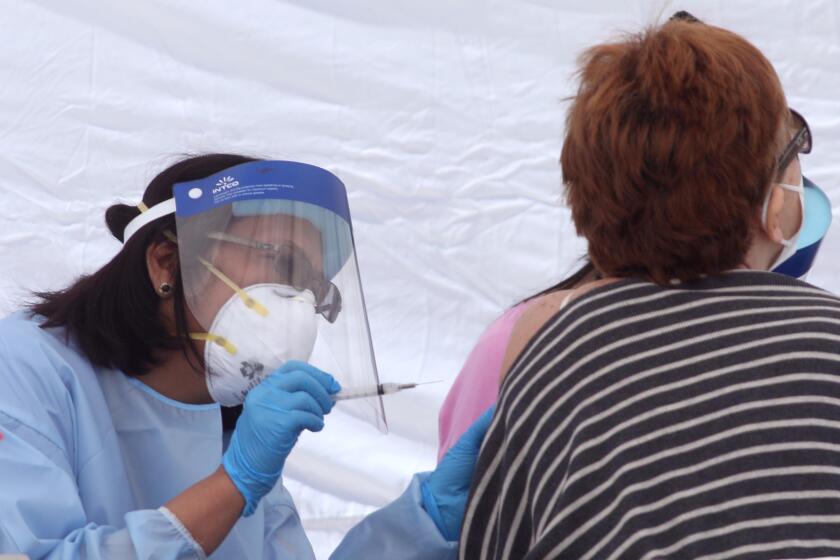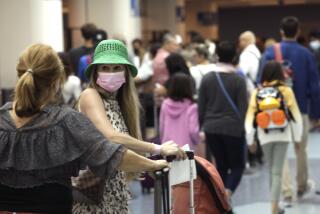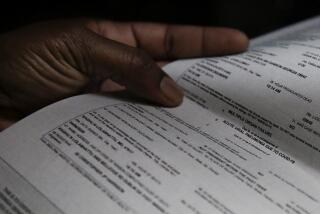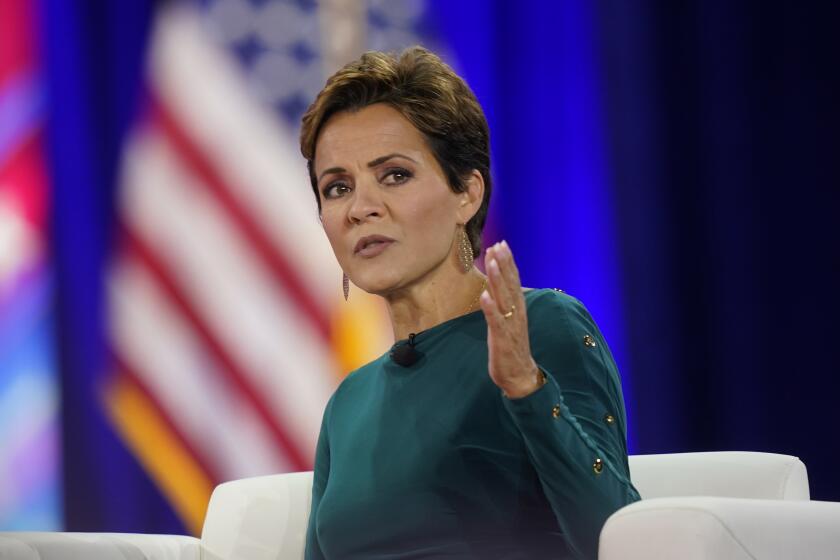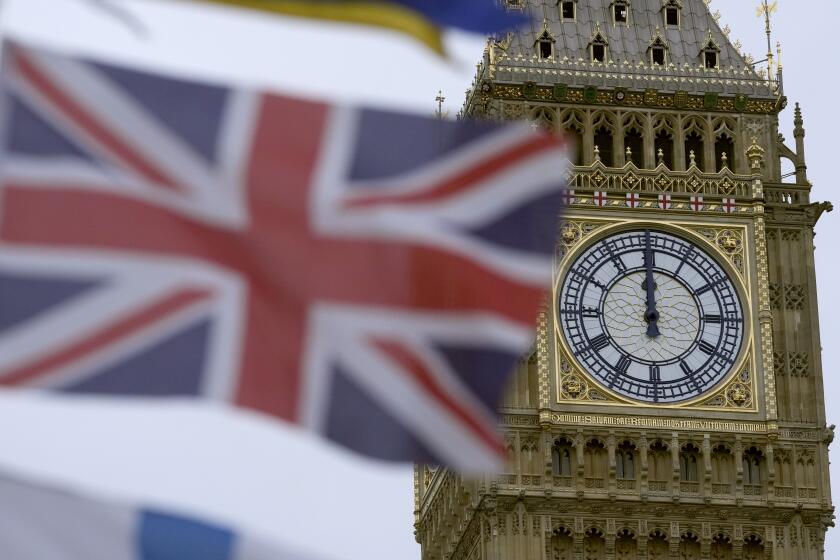U.S. death toll from COVID-19 approaches 500,000
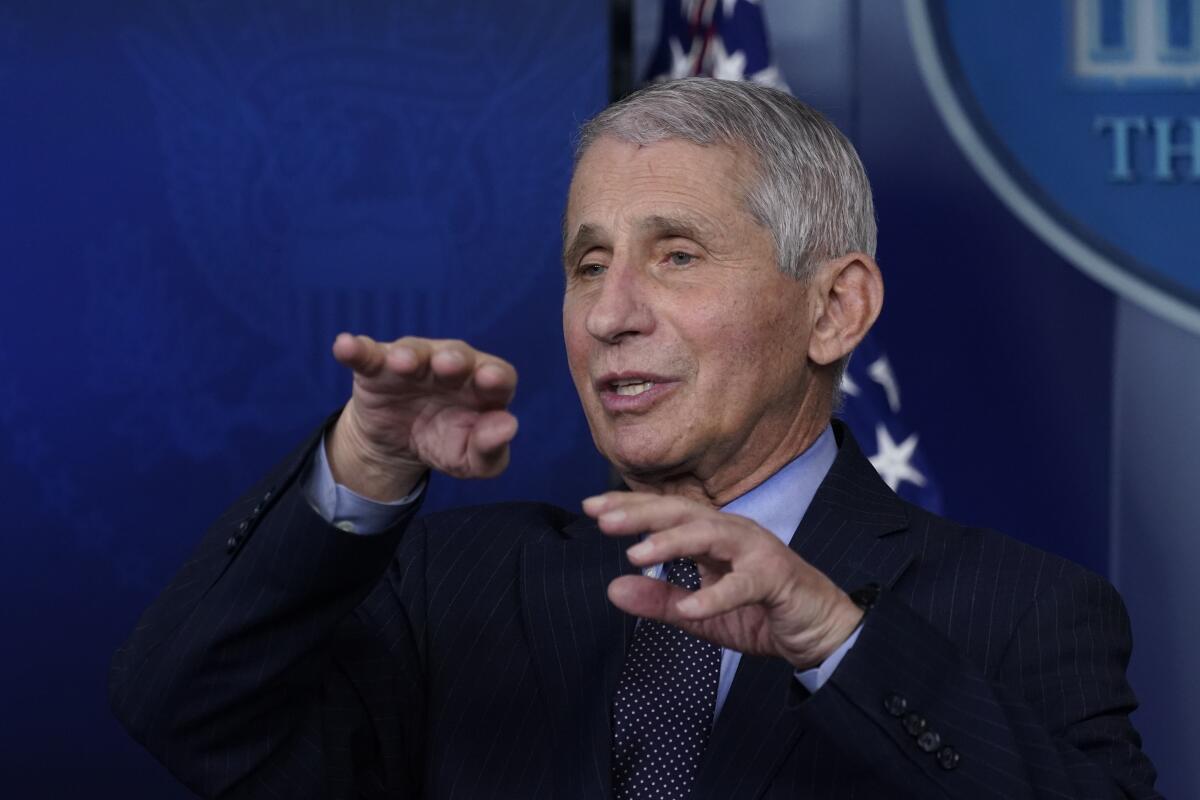
The U.S. stood Sunday at the brink of a once-unthinkable tally: 500,000 people lost to COVID-19.
A year into the pandemic, the running total of lives lost was about 498,000 — roughly the population of Kansas City, Mo., and just shy of the size of Atlanta. The figure compiled by Johns Hopkins University surpasses the number of people who died in 2019 of chronic lower respiratory diseases, stroke, Alzheimer’s, flu and pneumonia combined.
“It’s nothing like we have ever been through in the last 102 years, since the 1918 influenza pandemic,” the nation’s top infectious disease expert, Dr. Anthony Fauci, said on CNN’s “State of the Union.”
The U.S. virus death toll reached 400,000 on Jan. 19 in the waning hours in office for President Trump, whose handling of the crisis was judged by public health experts to be a singular failure.
Health officials reported 1,465 new coronavirus cases and 93 related deaths on Sunday, with the lower numbers suggesting the fall/winter surge is abating.
The first known deaths from the virus in the U.S. happened in early February 2020, both of them in Santa Clara County. It took four months to reach the first 100,000 dead. The toll hit 200,000 deaths in September and 300,000 in December. Then it took just over a month to go from 300,000 to 400,000.
Joyce Willis of Las Vegas is among the countless Americans who lost family members during the pandemic. Her husband, Anthony Willis, died Dec. 28, followed by her mother-in-law in early January.
There were anxious calls from the ICU when her husband was hospitalized. She was unable to see him before he died because she too had the virus and could not visit.
“They are gone. Your loved one is gone, but you are still alive,” Willis said. “It’s like you still have to get up every morning. You have to take care of your kids and make a living. There is no way around it. You just have to move on.”
Then came a nightmare scenario of caring for her father-in-law while dealing with grief, arranging funerals, paying bills, helping her children navigate online school and figuring out how to go back to work as an occupational therapist.
Her father-in-law, a Vietnam veteran, also contracted the virus. He also suffered from respiratory issues and died on Feb. 8. The family isn’t sure whether COVID-19 contributed to his death.
“Some days I feel OK and other days I feel like I’m strong and I can do this,” she said. “And then other days it just hits me. My whole world is turned upside down.”
The global death toll was approaching 2.5 million, according to Johns Hopkins.
Although the count is based on figures supplied by government agencies around the world, the real death toll is believed to be significantly higher, in part because of inadequate testing and cases inaccurately attributed to other causes in the pandemic’s early stages.
Despite efforts to administer COVID-19 vaccines, a widely cited model by the University of Washington projects the U.S. death toll will surpass 589,000 by June 1.
“People will be talking about this decades and decades and decades from now,” Fauci said on NBC’s “Meet The Press.”
More to Read
Start your day right
Sign up for Essential California for news, features and recommendations from the L.A. Times and beyond in your inbox six days a week.
You may occasionally receive promotional content from the Los Angeles Times.
